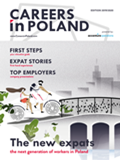AI is taking women’s jobs faster than men’s?

Editor

related articles
The automation gap: AI threatens more female jobs than male ones
According to the International Labour Organization’s 2024 report Generative AI and Jobs: A Refined Global Index of Occupational Exposure, women are significantly more exposed to the risk of job automation caused by generative AI than men. In high-income countries, 9.6% of female employees are estimated to be at “high automation risk” – a sharp increase from 7.8% just two years ago. Among men, this figure is only 3.5%, up from 2.9%.
Experts link this imbalance to the types of jobs most women hold. Roles in administration, customer service, and data entry are particularly susceptible to automation through AI systems that can manage information and communication tasks with minimal human input. As companies adopt generative AI tools to reduce costs, women’s positions are often the first to be restructured or replaced.
Why are women more vulnerable to AI-driven automation?
The ILO report highlights that the impact of AI is not evenly distributed across sectors. Women tend to be overrepresented in routine, office-based roles that rely on predictable patterns and repetitive processes – precisely the kind of work AI can easily replicate. Meanwhile, many male-dominated industries, such as construction, logistics, or manufacturing, still require manual, non-automatable labour.
This means that as AI tools like chatbots, automated scheduling, and document processing systems evolve, clerical and administrative roles – historically female-dominated – are disappearing the fastest. The trend raises serious concerns that the ongoing digital revolution may reinforce, rather than reduce, existing gender disparities in the workforce.
Technology adoption is rising – and so is the risk
The same ILO study shows that in 2024, over half of large enterprises (those employing more than 5,000 people) in high-income countries already used AI-based tools to automate parts of their operations. One in three employees in these economies is now partly exposed to automation, compared to one in four globally.
This rapid adoption of AI-driven systems means that a growing share of workers – especially women – will face structural job insecurity. What was once seen as a distant future scenario is now an urgent reality. Policymakers and business leaders are being urged to implement retraining and upskilling programs, particularly for women working in highly automatable roles. (ILO, 2024)
Closing the gap: how companies and governments can respond
While automation cannot be stopped, its social consequences can be managed. The ILO recommends a dual strategy: supporting innovation while ensuring inclusive labour policies. Governments should fund AI literacy programmes and digital skills training specifically aimed at women, helping them transition to more secure roles in technology, education, or creative industries.
Companies, in turn, can take action by auditing which roles are at risk, offering reskilling initiatives, and ensuring that AI implementation does not disproportionately affect one gender. Business leaders who approach automation ethically will not only protect their workforce but also build more resilient, gender-balanced organizations.
As the ILO warns, the AI revolution must be “human-centred” to truly deliver progress – otherwise, it risks widening existing inequalities rather than solving them.
How to stay ahead of AI: protecting your career in the age of automation
While the ILO data shows that women have the most reason to worry, the truth is that AI-driven change can affect anyone, regardless of gender or industry. Automation is no longer confined to repetitive office jobs – it’s also reshaping creative, analytical, and even technical roles once considered “future-proof.” For professionals in any field, the best defense is preparation.
Workers can protect themselves by continuously upgrading digital skills, learning how AI tools function, and understanding how to collaborate with them rather than compete. Enrolling in online reskilling programmes, improving AI literacy, and developing soft skills such as creativity, communication, and adaptability will become critical to long-term employability.
Experts also advise professionals to stay visible and proactive – seek out projects involving new technologies, join innovation initiatives at work, and showcase flexibility. Those who embrace AI as an opportunity to evolve, rather than a threat to resist, will be best positioned to thrive in tomorrow’s job market.
Your AI-proof career checklist
|
Step |
What can you do? |
Why does it matter? |
|
Learn how AI works |
Take short online courses or free webinars explaining the basics of AI and automation. |
Understanding how AI tools operate helps you adapt faster and identify new opportunities instead of fearing them. |
|
Upskill regularly |
Invest in digital and analytical skills through platforms like Coursera, Udemy, or Polish training portals. |
Continuous learning keeps your qualifications relevant as technology reshapes the job market. |
|
Strengthen soft skills |
Develop creativity, emotional intelligence, and adaptability through mentoring or teamwork experience. |
These are human traits that machines can’t easily replicate – your best long-term advantage. |
|
Embrace AI tools at work |
Experiment with generative AI applications such as ChatGPT, Jasper, or Notion AI to enhance productivity. |
Familiarity with AI shows initiative and positions you as a forward-thinking employee. |
|
Stay visible in your field |
Attend industry events, join online communities, and share your insights on LinkedIn. |
Networking helps you access new career paths and keeps you informed about emerging roles. |
|
Seek reskilling opportunities |
Ask your employer about internal AI or digital transformation projects. |
Participating in such initiatives builds practical experience and demonstrates flexibility. |
|
Track your industry’s automation trends |
Follow trusted sources such as the ILO, OECD, and World Economic Forum for new data. |
Staying informed helps you anticipate changes and plan your next career move early. |
Key takeaways
- Women face a higher risk of job automation – 9.6% of female workers in high-income countries are in roles highly exposed to AI, compared with 3.5% of men.
- Administrative, clerical, and data-entry jobs – traditionally dominated by women – are the most susceptible to automation by generative AI.
- Over 50% of large companies (5,000+ employees) in developed economies already use AI-based tools, increasing automation pressure across industries.
- One in three employees in these economies is at least partly exposed to AI-driven job transformation, compared to one in four globally.
- Policymakers and employers must act now – through reskilling, AI literacy programs, and fair implementation strategies – to prevent technology from deepening gender inequality.












